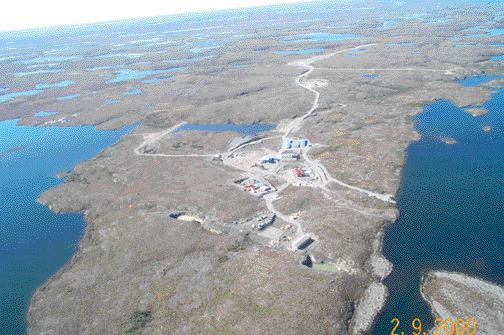You have to clear some significant hurdles in order to make money as an engineering firm in Canada’s decade-old diamond-mining industry.
First, there is the remote northern climate where temperatures climb to 25C for a week or two in the summer before dropping to -45C during long stretches of winter. Then there are the stringent scheduling constraints imposed by ice roads, short summers and frigid winters that necessitate erecting buildings and heating them as soon as possible.
These are among the challenges engineering firm
Over the previous 15 years, AMEC created a diamond-mining business that conducts feasibility studies and environmental assessments, as well as construction design and management.
The engineering firm decided to target diamond mining following the flurry of diamond-exploration activity in Canada’s Far North throughout the 1980s. It wasn’t much of a gamble given that AMEC had most of the necessary expertise in-house and the rest could be recruited.
The diamond-mining unit cut its teeth about a decade ago when AMEC provided the engineering, procurement and construction-management know-how on Canada’s first diamond mine,
London-based AMEC began work on the $700-million Ekati project in the early 1990s and production started at the end of 1998. Ekati produces roughly 6% of the world’s diamonds by value and the mine is expected to yield more than $9 billion in stones over its 25-year life.
“Our work on Ekati demonstrated our capabilities for cold-weather engineering on diamond mines in Canada,” says Robert Stanlake, AMEC’s vice-president and general manager of mining and metals.
To build Ekati, AMEC launched a campaign that included a marshalling yard in Yellowknife, a 400-km ice road, and more flights than all the commercial airline traffic in the Northwest Territories and Yukon combined. During the brief ice-road seasons in 1997 and 1998, the company procured, shipped and delivered more than 2,000 truckloads carrying more than 4,500 tonnes of equipment and material to the mine site.
AMEC developed further experience in the diamond industry through its involvement in more than 14 exploration projects in Ontario, Quebec, Alberta, Nunavut and the Northwest Territories.
In mid-May, De Beers awarded AMEC a $38-million contract to build the Snap Lake diamond mine, some 200 km northeast of Yellowknife in the Northwest Territories.
Snap Lake is expected to produce 1.5 million carats annually valued at US$144 per carat. Preliminary construction is under way. (AMEC had performed some work at Snap Lake for Winspear Resources, which discovered the deposit three years before
The Snap Lake project is budgeted at $636 million and includes an underground mine, processing plant, water treatment facility, diesel power generators, airstrip, shops and services building, accommodations and other support facilities.
When it’s finished in 2007, Snap Lake will be Canada’s fourth diamond mine and the first entirely underground. (
Snap Lake is owned by De Beers Canada whose parent company, De Beers, was founded in South Africa more than a century earlier. De Beers is involved in every facet of diamond production and began its search for Canadian diamonds in the early 1960s.
The company plans to bring two diamond projects here into production over the next three years and is advancing two more with Canadian juniors. De Beers continues to search for Canadian diamonds at roughly 30 early-stage exploration projects throughout the country.
On the heels of Snap Lake, De Beers plans to develop the Victor project, a proposed open-pit operation in the James Bay lowlands in northern Ontario. AMEC conducted a final feasibility study at Victor and an environmental assessment is entering its final stages.
AMEC has also teamed with De Beers on the Gahcho Ku diamond deposit in the Northwest Territories and the large-tonnage Fort la Corne diamond deposit in Saskatchewan.
— The author is the vice-president of mining and metals operations with London-based AMEC.


Be the first to comment on "Engineering a diamond mine in the Far North"